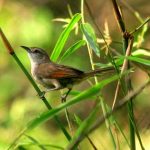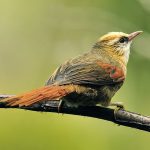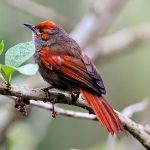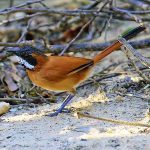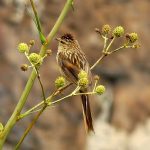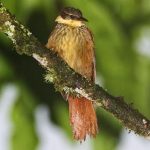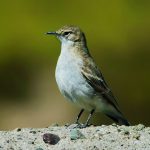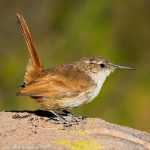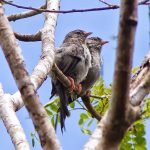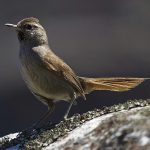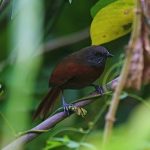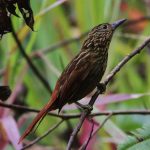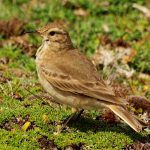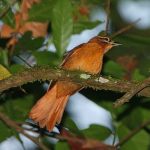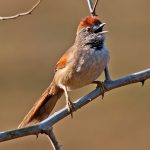Greater thornbird
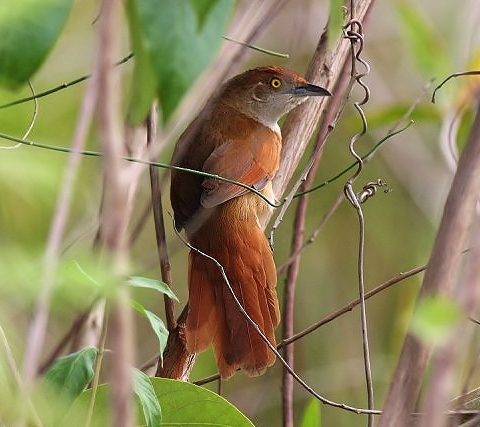
 |
| Photo by Markus Lagerqvist (Pbase) |
Common name:
greater thronbird (en); graveteiro (pt); synallaxe rouge (fr); espinero grande (es); rotbrauner bündelnister (de)
Taxonomy:
Order Passeriformes
Family Furnariidae
Range:
This South American species is found in central and southern Brazil, Bolivia, Paraguay, northern Argentina and northern Uruguay.
Size:
These birds are 19-21 cm long and weigh 35-50 g.
Habitat:
Greater thornbirds are found in the undergrowth of tropical moist forests, in moist scrublands, riverine thickets, marshes and degraded former forests. They are present at altitudes of 300-1.400 m.
Diet:
They forage on the ground, among dense vegetation or near the edges of water bodies, taking insects, such as ants and beetles, and other small invertebrates.
Breeding:
The greater thornbird breeds in October-January. The nest is a bulky, cone-shaped structure, made of sticks, twigs, and branches and lined with fine grasses and feathers. It is placed in low vegetation, 1-3 m above the ground, and often over water. The female lays 3-4 white eggs, which are incubated by both parents for 20-22 days. The chicks are fed by both parents and possible fledge 25-29 days after hatching.
Conservation:
IUCN status – LC (Least Concern)
This species has a very large breeding range and is described as common. This population is suspected to be stable in the absence of evidence for any declines or substantial threats.

